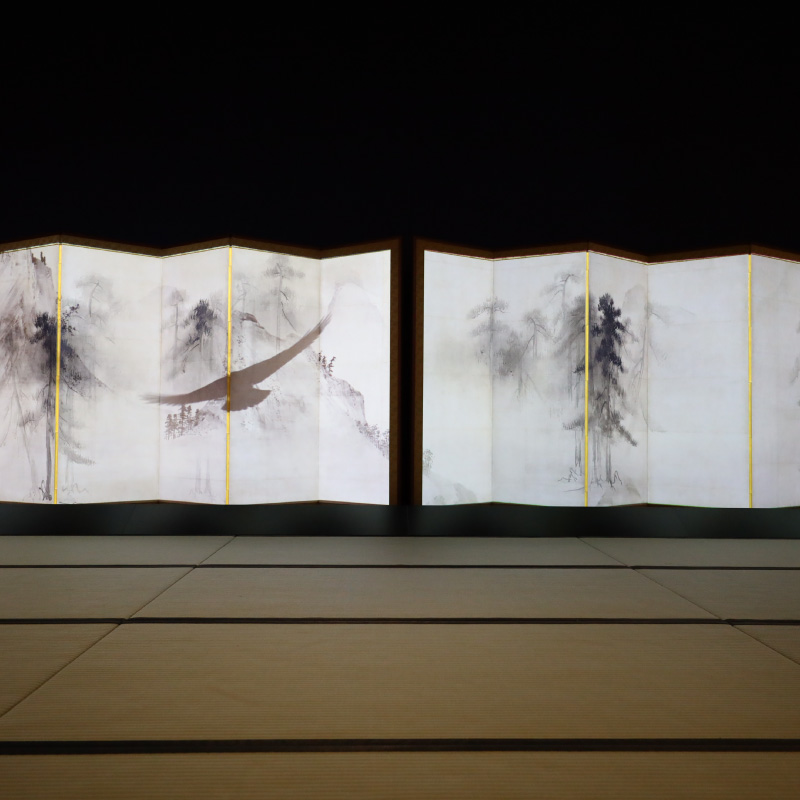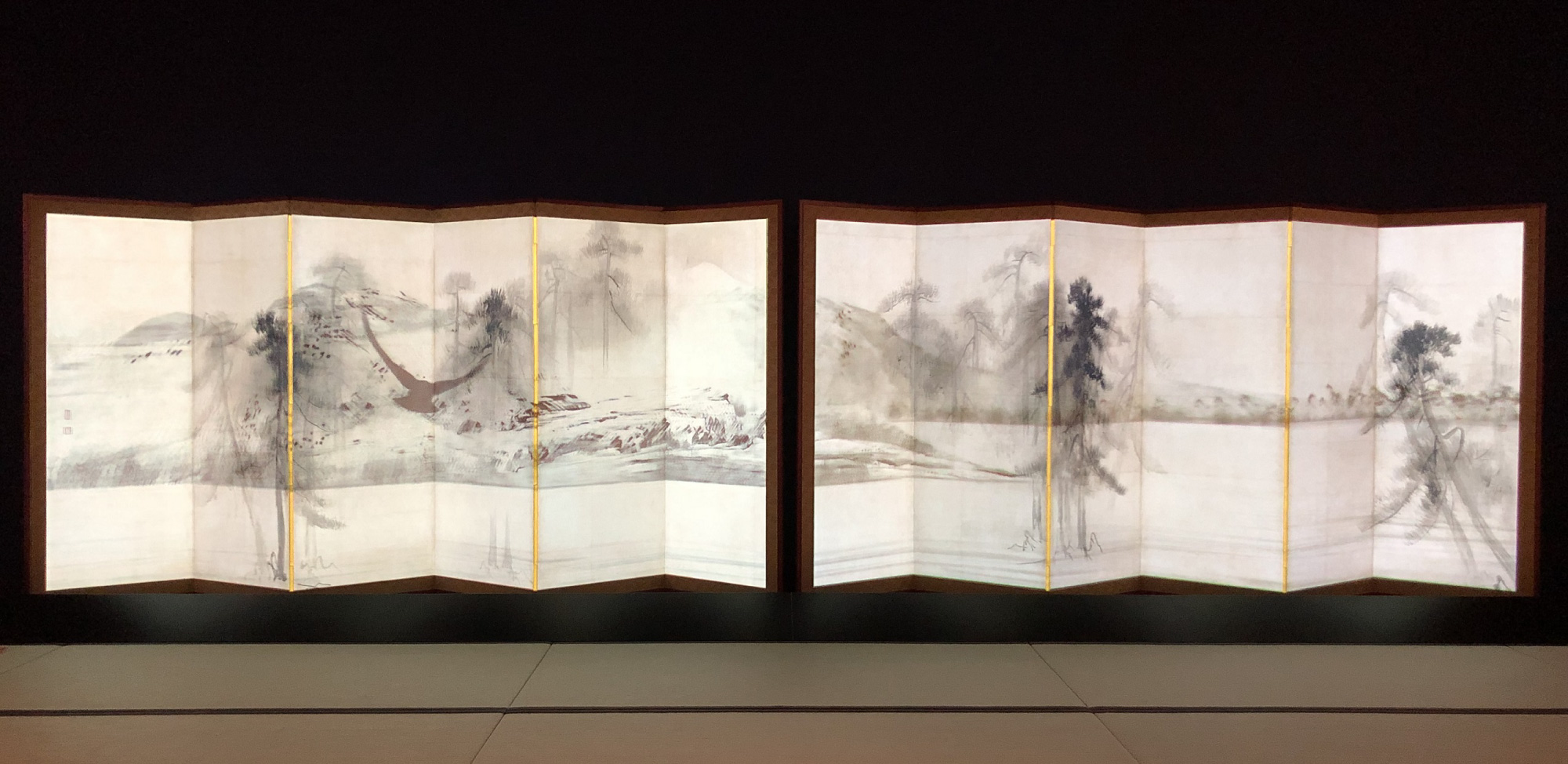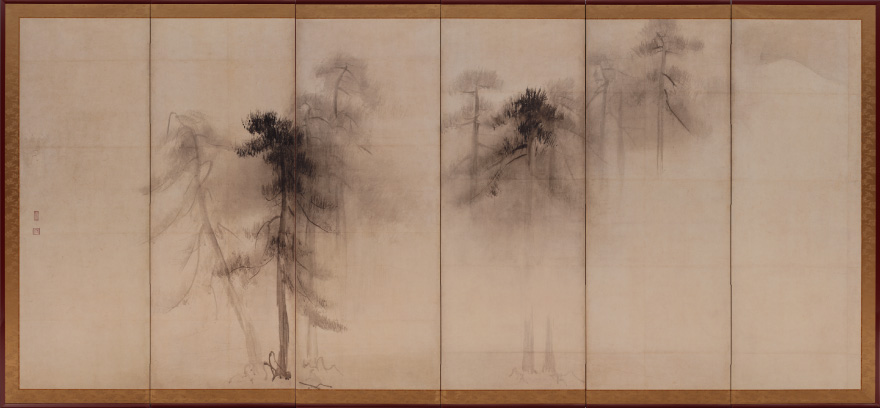
| Period | January 2, 2019 (Wed) - February 3, 2019 (Sun) |
|---|---|
| Place | Tokyo National Museum Honkan-Room T4 |
| Hours | 9:30-17:00; Fridays, Saturdays, October 31, and November 1: until 21:00 (Last entry 30 minutes before closing) |
| Closed | Mondays |
| Admission | These works can be viewed by paying the admission fee for regular exhibits. |
| Organizers | Tokyo National Museum, National Center for the Promotion of Cultural Properties, Canon Inc. |
This interactive exhibition explores folding screen paintings – Hasegawa Tohaku’s Pine Trees – through high-resolution facsimiles and video imagery.

The high-resolution facsimiles and video imagery (C)Prototype.inc
Highlights of the Exhibition
Although folding screens were used in daily life as decorations and partitions since ancient times in Japan, they are rarely seen in modern society. In this gallery, high-resolution facsimiles allow visitors to experience folding screens as they were originally meant to be used – on tatami mats and without display cases. Dynamic video imagery enhances the experience, allowing visitors to expand their imaginations and enjoy these famous paintings with the five senses. We hope you enjoy this new experience of “diving” into masterpieces of Japanese painting

By Hasegawa Tohaku (1539-1610) / Azuchi-Momoyama period, 16th century / Ink on paper / Owned by the Tokyo National Museum

Dated 2008 / Printed on Japanese paper / Owned by the Tokyo National Museum
These high-resolution facsimiles were created as part of the “Tsuzuri Cultural Heritage Inheritance Project,” conducted by Canon Inc. and the Kyoto Culture Association, a non-profit organization. This project was launched with the aim of making precious cultural assets from ancient Japan accessible to a wider audience while protecting the originals from deterioration. The exhibition is intended to present the outcomes of projects initiated by the National Center for the Promotion of Cultural Properties, which aims to promote effective utilization of cultural assets.

